Today’s customers expect an omnichannel shopping experience—about 60–70% already shop this way. But managing multiple sales channels, including your online store, social media, and other touchpoints, can feel like a one-person circus. Inventory gets out of sync, deliveries fail, and frustrated customers purchase from someone else.
Sounds familiar? We get it. At GenovaWebArt, we help businesses like yours create an effective omnichannel strategy for Shopify. In this guide, we’ll show you how to achieve a fully integrated approach that combines all your touchpoints in one place. Ultimately, you’ll learn to deliver a unified customer experience that smoothly moves them down the sales funnel.
Since 2012, our team has been at the forefront of Shopify development and omnichannel commerce. Having boosted customer engagement for Kit & Kin and countless other stores, we’re here to share proven strategies we’ve developed along the way.
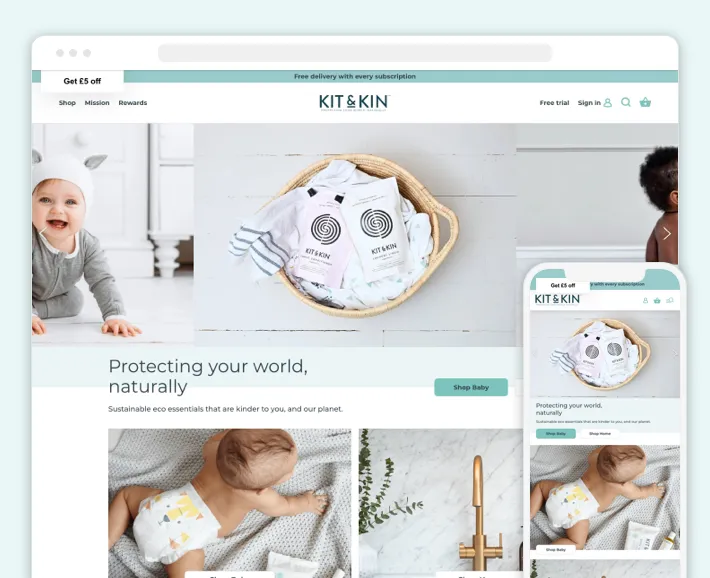
Table of Contents
- Understanding an Omnichannel Strategy
- Omnichannel Strategy Examples and Case Studies
- Creating an Effective Omnichannel Strategy
- Tools and Technologies for Shopify Omnichannel Success
- Challenges and Solutions in Shopify Omnichannel
- Future Trends in Shopify Omnichannel Marketing
- We Are Here to Help!
- Conclusion
- FAQ
Understanding an Omnichannel Strategy
While we’ve briefly touched upon the Shopify omnichannel strategy, it may still be unclear how it works and what it is exactly. Let’s make these things straight.
Shopify Omnichannel Strategy Explained
An omnichannel eCommerce strategy is about creating a unified and cohesive customer experience that integrates all your touchpoints. It goes beyond simply selling across multiple channels like your website, mobile app, social media, or marketplaces. Instead, it offers uninterrupted shopping regardless of the touchpoint your customers choose.
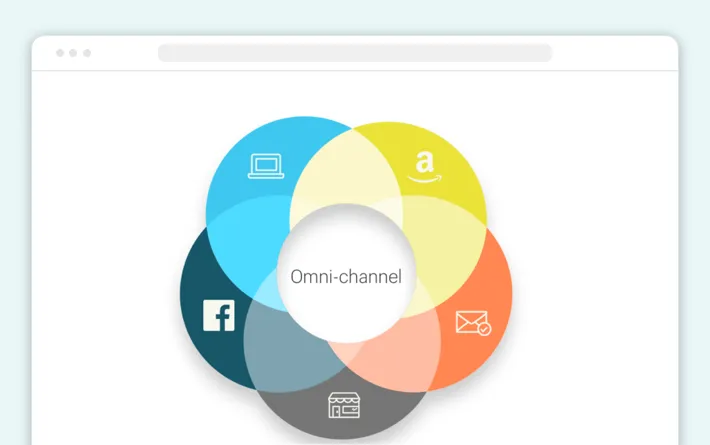
Think of the omnichannel marketing definition this way: Your customer finds your products through Instagram. Then, they click a link and go to your online store, where their desired items are already waiting in their shopping cart. They can even choose in-store pickup if convenient. This approach creates a smooth journey at every point of interaction with your brand.
Differentiating Shopify Omnichannel from Multichannel
In both omnichannel and multichannel strategies, you’re dealing with multiple sales channels. What’s the difference, then? Let’s compare multichannel and omnichannel marketing to get this clear.
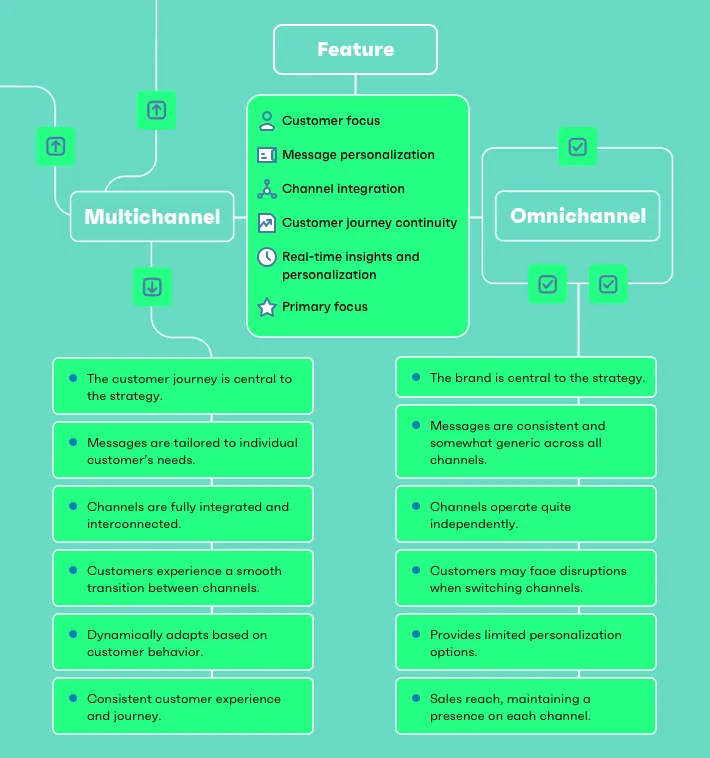
Importance of Seamless Shopping Experiences
Why choose the omnichannel strategy instead of multichannel? Here are just a few reasons you may want to opt for a seamless approach:
- Improved customer experience. Customers value convenience and consistency — two things that omnichannel commerce brings.
- Increased customer loyalty. When customers feel valued and understood across all touchpoints, they’re more likely to become loyal brand advocates.
- Boosted sales. A seamless shopping experience encourages customers to spend more and facilitates repeat purchases. In fact, omnichannel customers spend 1.5 times more monthly than single-channel ones and are 3+ times more loyal than digital-only buyers.
- Data-driven insights. The omnichannel strategy lets you get a unified view of customer data and behavior, leading to more effective marketing tactics and decisions.
- Competitive edge. Brands that offer a seamless shopping experience stand out from competitors who don’t do so.
- Improved inventory management. A comprehensive understanding of your inventory on every channel lets you avoid stockouts and overstocking.
Omnichannel Strategy Examples and Case Studies
There are numerous viable omnichannel strategy scenarios. Some possible examples are:
- Your customers browse your product on Facebook, Instagram, or Pinterest and head to your online store to complete the purchase;
- Your customers find your products on Amazon, eBay, or another marketplace and then buy them in person in your brick-and-mortar store;
- Your customers explore your products in-store, scan them through your dedicated app, and add them to their cart for later purchase at home.
While these scenarios are almost countless, every Shopify omnichannel strategy example has a common framework:
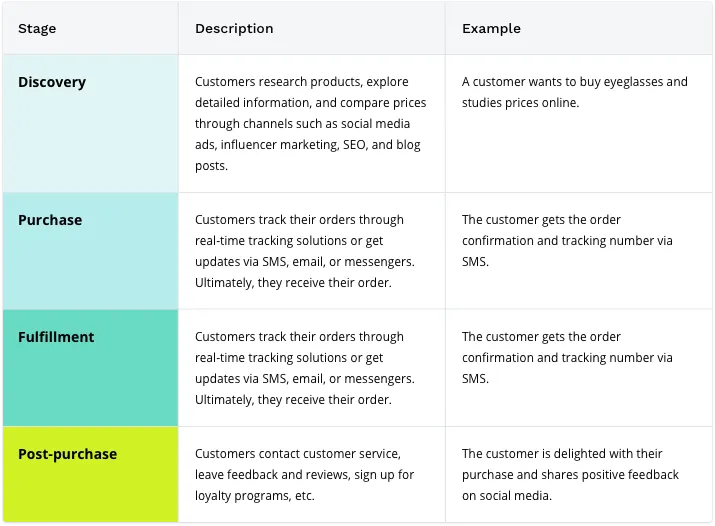
Successful Shopify Stores Implementing Omnichannel Strategies
Let’s move ahead to more tangible examples of omnichannel commerce. Look at how Shopify stores implement this strategy in their business.
Allbirds
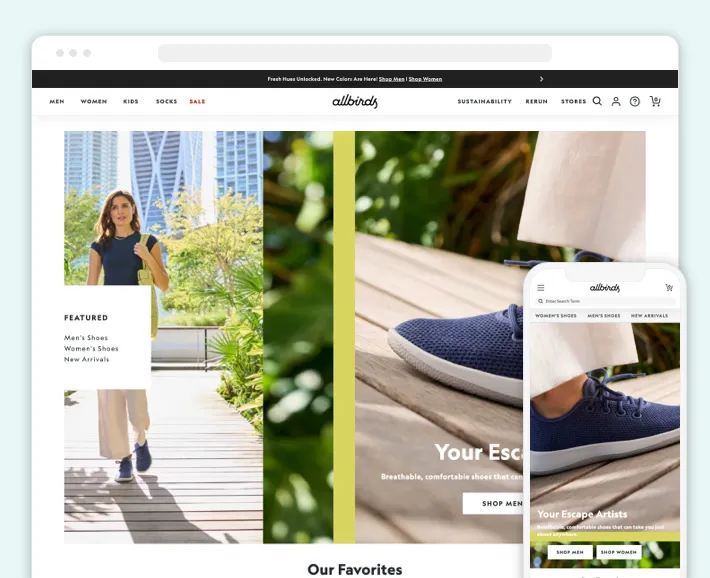
This Shopify-based fashion brand initially started online-only but quickly adopted an omnichannel approach by testing physical retail pop-ups. Leveraging Shopify POS, Allbirds allowed customers to buy in-store and have their purchases shipped directly to them.
Warby Parker

Despite being a digital-first eyewear company, Warby Parker recognized the physical retail’s value. Customer demand for eye exams and the ability to try on glasses before buying led them to open brick-and-mortar stores.
These stores serve a dual purpose: promoting their brand and generating additional income. Actually, 76% of Warby Parker stores offer eye exams, which significantly boosts their average revenue per customer.
This omnichannel example shows how powerful integrating online and offline experiences is for creating a unified customer journey.
Analysis of Benefits and Outcomes from Implemented Strategies
Let’s now see what Allbirds and Warby Parker gained from Shopify omnichannel. Here are the outcomes for each store:
- Allbirds. Increased brand awareness through physical presence, increased conversions owing to an omnichannel approach, and streamlined inventory management through a buy-in-store, ship-to-customer strategy.
- Warby Parker. Provided a better customer experience with eye exams, increased purchase conversion with in-store try-on options, and elevated brand awareness through physical stores.
Creating an Effective Omnichannel Strategy
Now that you know how influential the omnichannel approach is and how other brands leverage it, let’s look at how to create an omnichannel strategy in Shopify. It takes the following steps:
Importance of Customer Journey Mapping
The first step to a successful omnichannel strategy is figuring out your customer journey. It involves mapping out all the touchpoints a customer might have with your brand, from initial discovery to purchase.
If you’re sure, for example, that none of your customers use eBay, Facebook, or similar platforms, there’s no need to allocate your budget to them. And it’s always best to analyze.
Gather the data on customer searches, previous purchases, and other relevant info to:
- Create a unified experience on all channels;
- Personalize interactions with your brand;
- Identify areas where customers experience frustration.
Integration of Online and Offline Channels
Online and offline shopping experience integration is at the core of an effective omnichannel strategy. That’s because your customers want to know if their desired items are in stock before they come to your physical store. Or they simply want to order online and pick up at the register immediately.
Here’s how to achieve seamless integration:
- Use a unified inventory management system to ensure accurate stock levels across online and offline channels;
- Implement a system that shares customer data among all channels to personalize marketing campaigns;
- Offer various fulfillment options like in-store pickup, home delivery, or click-and-collect.
Personalization and Customer Experience Enhancement
Personalization is a must if you aim to create a positive customer experience. Here’s how to leverage it in your omnichannel eCommerce strategy:
- Use customer data from different channels to create targeted ads on social media, search engines, and other platforms;
- Recommend products based on previous purchases, browsing behavior, and customer preferences;
- Automate social media engagement, ensuring prompt responses to comments and messages;
- Provide excellent customer service across all channels and resolve any issues quickly.
Tools and Technologies for Shopify Omnichannel Success
Learning the necessary steps to create a Shopify omnichannel strategy is just part of the task. You also need the right tools and techs to make everything work smoothly. Here’s what you can use.
Recommended Shopify Apps and Plugins
The Shopify App Store offers over 8,000 apps, many of which can improve your omnichannel capabilities. We recommend the following ones:
- Stock Sync and QuickSync for inventory management;
- ShipStation for shipping and returns management;
- Klaviyo and Omnisend to segment your audience and create targeted email and SMS campaigns;
- Zendesk and JivoChat for live chat and customer support capabilities.
Using Customer Relationship Management Systems
While not a Shopify app per se, a customer relationship management (CRM) system can greatly facilitate your omnichannel strategy. A CRM centralizes customer data, covering purchase history, interactions, and preferences.
Popular solutions that work well with Shopify stores include HubSpot CRM, Salesforce CRM, and Zoho CRM.
Leveraging Marketing Automation Platforms
Marketing automation platforms let you create automated workflows for tasks such as:
- Abandoned cart recovery emails;
- Welcome emails;
- Personalized product recommendations;
- Birthday and anniversary promotions.
This saves you a lot of time when managing multiple channels. The decent platforms you may want to integrate with Shopify are Klaviyo, Omnisend, and Mailchimp.
Challenges and Solutions in Shopify Omnichannel
The omnichannel approach is undoubtedly beneficial for businesses. However, when implementing this strategy, you may face certain challenges and limitations. Let’s go through them in greater detail.
Common Challenges Faced by Shopify Stores
Here are the Shopify omnichannel obstacles you should prepare for in advance:
- Data integration and management. Ensuring seamless data flow across online and offline channels can be complex. If mistakes occur, you may struggle with inaccurate inventory levels, personalized marketing misfires, and poor customer experience.
- Inventory management complexity. When striving to maintain accurate stock levels across multiple channels, a robust inventory management system is a must. Not leveraging such a platform solution can result in overselling and stockouts.
- Technical expertise. To implement an omnichannel strategy successfully, you may need technical knowledge to integrate various tools and platforms. This means additional hassle in finding a tech partner.
Strategies to Overcome Implementation Hurdles
Don’t be scared of the challenges we just listed. You can tackle them by relying on the following solutions:
- Use data integration platforms to streamline data flow between your Shopify store, CRM system (if any), and other relevant tools;
- Implement a centralized inventory management system with real-time stock visibility across all channels to ensure accurate inventory levels and avoid order fulfillment issues;
- If you lack the technical expertise in-house, consider partnering with a Shopify development agency like GenovaWebArt to help you implement your omnichannel strategy.
Future Trends in Shopify Omnichannel Marketing
While omnichannel commerce isn’t entirely a new thing, the methods and tools of its implementation constantly evolve. Here’s a look at some trends that’ll define the omnichannel marketing future.
Emerging Technologies Shaping the Future of Omnichannel Strategies
Several technologies prove invaluable in delivering a truly omnichannel experience. They are:
- Augmented reality (AR). AR, estimated to reach $58 billion by 2034 in the shopping segment, is a technology that lets customers virtually try on clothes or see furniture in their homes. By introducing this innovation to your customer journey, you can create more immersive and interactive shopping experiences.
- Artificial intelligence (AI). AI, projected to surpass $22 billion by 2030 in eCommerce, will significantly personalize the customer experience. AI-powered chatbots can provide real-time customer support, while recommendation engines can suggest products following individual customer preferences and past purchases.
- Voice commerce. Shopping through voice assistants like Alexa or Google Assistant can become one more touchpoint in your customer journey. With the voice commerce market predicted to exceed $36 billion by 2030, you cannot but check this innovation.
Predictions and Innovations in Omnichannel Retailing
When choosing a Shopify omnichannel strategy, consider the following trends that’ll help you refine it to perfection:
- Social commerce. Selling directly through social media platforms like Instagram and TikTok will become even more common. This is clear in the forecast, which predicts that social commerce revenues will steadily increase each year, exceeding $1,085 billion by 2028.
- Brand identity over channel-centricity. Omnichannel success hugely depends on a consistent and cohesive brand experience. Businesses will have to focus on building a strong brand identity with a clear message instead of working on several channels separately.
- Hyper-personalization. Given the AI and data analytics advancements, personalization will go beyond product recommendations. We expect to see personalized offers, discounts, and loyalty programs that are adapted to each particular customer.
We Are Here to Help!
GenovaWebArt brings over a decade-long background in Shopify design and development to the table. During this time, we helped over 200 stores reach their intended goals, whether going headless in Shopify, handling an upgrade to Shopify Plus, or implementing a successful omnichannel strategy.
Our team can assist you in going omnichannel, too. And implement your numerous other ideas into life. In particular, we can perform the following tasks:
- Shopify app development;
- API and third-party app integration;
- Shopify expansion stores;
- Shopify performance and conversion optimization.
Besides the above, GenovaWebArt can also handle end-to-end Shopify design and development of any complexity — headless commerce solutions included. When choosing us for omnichannel strategy creation, you benefit from our:
- Long-term commitment;
- Well-established processes;
- Competitive pricing;
- Clear timelines and communication.
Looking for undeniable proof of our expertise? See how we implemented an omnichannel eCommerce strategy for Kit & Kin.
Kit and Kin
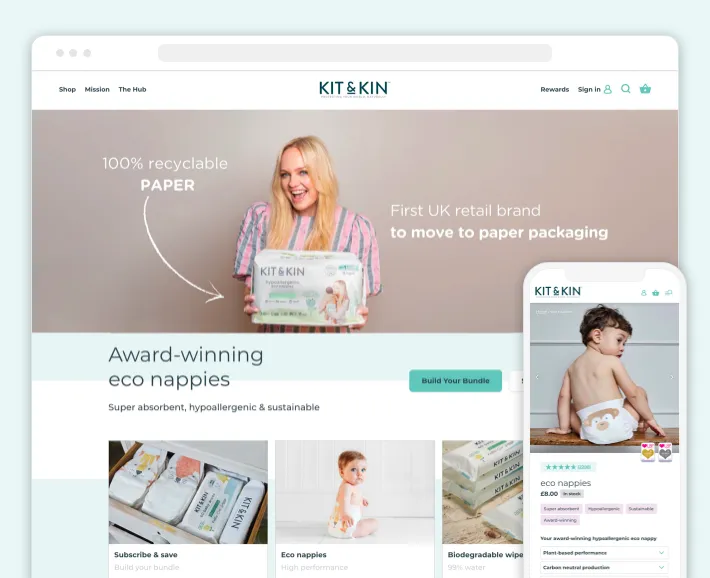
Kit & Kin, a childcare brand, required us to migrate their store from WooCommerce to Shopify Plus. Once we handled this initial task, we started working on their omnichannel strategy. The solutions for a seamless customer journey we suggested were:
- Website internationalization to cater to customers worldwide;
- Klaviyo integration for audience segmentation and personalized flows;
- Complex out-of-stock functionality for easier fulfillment.
Want to learn more? Head to our portfolio for more practical insights.
Conclusion
An isolated approach simply won’t cut it in the fierce competition that eCommerce witnesses today. Customers demand convenience — no matter which touchpoint they interact with. Therefore, embrace Shopify omnichannel to keep your customers engaged and your business thriving.
Ready to implement your omnichannel strategy? While this post provided essentials like a definition, examples, and challenges of Shopify omnichannel, our team is here to offer expert guidance. All you need to do is just contact us for a quick consultation.
Frequently Asked Questions
How does omnichannel help improve the shopper experience?
How can a business that uses omnichannel on the Shopify platform benefit?
- Improved customer experience and loyalty;
- Increased sales and revenue;
- Data-driven insights into customer behavior;
- Competitive advantage;
- More effective inventory management.
How can I optimize my omnichannel strategy on the Shopify platform?
To optimize your omnichannel strategy on Shopify, go through the following steps:
- Map your customer journey;
- Ensure seamless integration between your online store, physical locations (if any), and other sales channels;
- Use customer data to personalize your marketing and interactions;
- Leverage the right tools for inventory management, fulfillment, marketing automation, and customer support.




![Shopify ERP Integration: Pros & Flow [2024] - GenovaWebArt blog article, banner image Shopify ERP Integration: Pros & Flow [2024] - GenovaWebArt blog article, banner image](https://genovawebart.com/hubfs/img/webp/hero-banner-blog-article-shopify-erp-integration.webp)

![Shopify Sales Channels [Complete Guide] - GenovaWebArt blog article, banner image Shopify Sales Channels [Complete Guide] - GenovaWebArt blog article, banner image](https://genovawebart.com/hubfs/img/webp/hero-banner-blog-article-shopify-sales-channels.webp)
